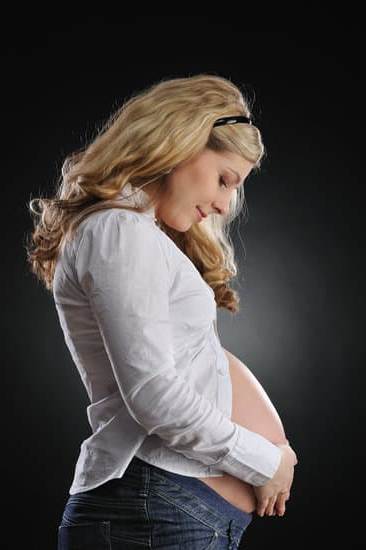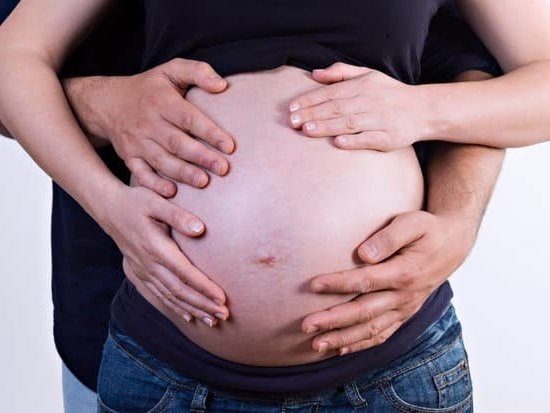Understanding the physical transformation from a flat abdomen to a round and protruding belly is an essential aspect of embracing the changes that come with pregnancy. It’s not just about the visible growth, but also about how the body adapts to accommodate and protect the developing baby. The process involves much more than just weight gain; it’s about nurturing life within.
Taking care of your pregnancy belly goes beyond simply applying skincare products to prevent stretch marks. It’s about embracing self-care rituals that honor the changes your body is going through, while also celebrating its strength and resilience. This nurturing approach extends beyond physical care, encompassing emotional well-being as well.
Embracing your pregnancy belly involves more than accepting physical changes; it’s about cultivating a positive mindset and deep sense of self-love despite societal pressures or personal insecurities. This shift in perception can be an empowering experience, helping women recognize their bodies as vessels of creation and beauty.
Understanding the Physical Transformation
During pregnancy, a woman’s body undergoes a miraculous transformation as it prepares to nurture and grow new life. One of the most noticeable changes is the expansion of the abdomen, commonly referred to as the pregnancy belly. Understanding this physical transformation from a flat stomach to a round belly can help expecting mothers embrace and appreciate the beauty of their changing bodies.
The Growth of the Uterus
One of the primary reasons for the physical transformation of a flat stomach into a round belly is the growth of the uterus. As the baby grows inside the womb, so does the uterus, expanding and pushing against the abdominal wall. This gradual expansion results in a visible increase in belly size, often leading to that classic pregnant “bump”.
Weight Gain and Body Changes
Alongside the growth of the uterus, weight gain is also an inevitable part of pregnancy as it supports both mother and baby. The body naturally stores extra fat as a reserve for breastfeeding and to provide energy during labor. These changes in body shape often result in not just a growing belly but also broader hips, larger breasts, and an overall fuller figure.
Shifts in Internal Organs
In addition to outward physical changes, a pregnant woman’s internal organs experience shifts to accommodate her growing baby. The displacement and compression of organs such as the stomach and intestines contribute to changes in digestion and may lead to feelings of fullness or difficulty breathing. Understanding these physiological adjustments can help women appreciate their pregnancy belly as part of their body’s incredible ability to adapt and nurture new life.
Tips for Taking Care of Your Pregnancy Belly
During pregnancy, a woman’s body goes through a lot of changes, one of the most visible being the expansion of her belly as her baby grows. As the skin stretches to accommodate the growing fetus, it can lead to the development of stretch marks. While these marks are a natural part of pregnancy for many women, there are ways to help minimize their appearance and take care of your pregnancy belly.
Here are some tips for taking care of your pregnancy belly:
1. Moisturize regularly: Keeping your skin hydrated can help improve its elasticity, reducing the likelihood of developing stretch marks. Look for creams or oils specifically formulated for pregnant women, with ingredients such as cocoa butter, shea butter, or vitamin E.
2. Avoid scratching: As your belly expands, it may become itchy due to the stretching skin. Resist the urge to scratch it, as this can cause irritation and potentially worsen stretch marks. Instead, gently massage your belly with moisturizer to relieve itching.
3. Stay hydrated and eat well: Drinking plenty of water and maintaining a healthy diet can contribute to the overall health and elasticity of your skin. Foods rich in vitamins A, C, E, and zinc may also promote skin health.
By following these tips and taking good care of your pregnancy belly with proper skincare practices, you can embrace this beautiful phase of motherhood with confidence and self-love while minimizing the appearance of stretch marks. Remember that every pregnancy belly is unique and beautiful in its own way.
Embracing Your Pregnancy Belly
Pregnancy is a miraculous journey that brings about significant changes in a woman’s body, and perhaps the most noticeable one is the transformation of the abdomen into a pregnancy belly. Embracing your pregnancy belly is not just about accepting the physical changes, but also about cultivating body positivity and self-love during this transformative time.
It’s common for women to experience insecurities about their changing body during pregnancy, especially with the societal pressure to “bounce back” after giving birth. However, it’s important to remember that pregnancy belly is a beautiful symbol of the incredible process of creating life. Embracing your pregnancy belly means appreciating the strength and resilience of your body as it nourishes and protects your growing baby.
One way to foster body positivity during pregnancy is by practicing self-care, such as gentle exercise or prenatal yoga, which not only helps maintain physical health but also promotes emotional well-being. Additionally, surrounding yourself with positive affirmations and seeking out supportive communities of other expectant mothers can help reinforce feelings of self-love and confidence as you embrace your pregnancy belly.
Ultimately, embracing your pregnancy belly is a deeply personal journey that involves both physical and emotional aspects. By focusing on self-care, surrounding yourself with positivity, and acknowledging the beauty of this unique phase in your life, you can cultivate a strong sense of body positivity and self-love as you navigate the changes brought about by your pregnancy belly.
The Science Behind the Pregnancy Belly
During pregnancy, a woman’s body goes through remarkable changes, both internally and externally. One of the most noticeable transformations is the expansion of the abdomen, resulting in what is commonly referred to as the “pregnancy belly.” This section will explore the science behind how and why the pregnancy belly grows, shedding light on the incredible process that takes place within a woman’s body during this time.
The growth of the pregnancy belly is primarily attributed to the development of the fetus and the expansion of the uterus. As the fetus grows, it requires more space to thrive and develop. The uterus expands to accommodate this growth, pushing against the abdominal wall and causing the belly to protrude outward. Additionally, an increase in amniotic fluid also contributes to the expansion of the abdomen, further emphasizing the roundness of the pregnancy belly.
Furthermore, hormonal changes play a significant role in promoting abdominal growth during pregnancy. The hormone relaxin is released in higher levels during pregnancy, softening and relaxing the ligaments in the pelvis and abdomen. This allows for greater flexibility and expansion in these areas, facilitating the necessary physical changes to support fetal growth. The combination of these physiological factors results in the gradual but steady enlargement of the pregnancy belly as pregnancy progresses.
To understand how and why it grows, here are some key points to consider:
- Development of fetus demands more room
- Uterus expands to accommodate fetal growth
- Increase in amniotic fluid further emphasizes roundness
- Hormonal changes play a significant role
Common Myths and Misconceptions About Pregnancy Belly
Many myths and misconceptions surround the pregnancy belly, leading to confusion and misinformation for expectant mothers. One common myth is that the shape and size of a woman’s pregnancy belly can determine the baby’s gender. This belief has no scientific basis and is simply a fun old wives’ tale. The truth is that the shape of the belly is determined by factors such as the mother’s body type, muscle tone, and the position of the baby.
Another myth surrounding pregnancy bellies is that cocoa butter or other topical creams can completely prevent stretch marks. While keeping the skin moisturized can help with itching and discomfort, genetics play a significant role in whether an individual will develop stretch marks during pregnancy. It’s important for women to understand that stretch marks are a natural part of pregnancy for many women and are nothing to be ashamed of.
One more misconception about pregnancy bellies is that all women will have a perfectly round belly during pregnancy. In reality, every woman’s body is unique, and the appearance of the pregnancy belly can vary widely from person to person. Factors such as muscle tone, weight gain, and previous pregnancies can all influence the shape and size of a woman’s pregnancy belly.
| Myth or Misconception | Fact |
|---|---|
| The shape of your pregnancy belly determines your baby’s gender | This has no scientific basis |
| Cocoa butter prevents stretch marks | Moisturizing can help with itchiness but genetics also play a significant role |
| All pregnant women have perfectly round bellies | Variety in shapes due to body type, muscle tone, weight gain etc. |
The Emotional Journey of Pregnancy Belly
The emotional journey of the pregnancy belly is a rollercoaster ride for many women. From the initial shock of seeing their bodies change to embracing and loving their new form, it’s an experience that can be filled with both insecurities and newfound confidence. It’s essential to acknowledge that these emotions are perfectly normal and part of the process of coming to terms with the physical transformations that come with pregnancy.
Acceptance and Insecurities
For many women, the first glimpse of their pregnancy belly can bring about a wave of mixed emotions. Some may feel insecure about their changing bodies, especially if it doesn’t align with societal beauty standards or what they envisioned for themselves.
The sudden weight gain and the roundness of the belly can also lead to feelings of self-consciousness, especially for those who have always struggled with body image issues. It’s crucial during this time to acknowledge these feelings and understand that they are valid.
Celebrating and Embracing
As time progresses, many women begin to find comfort in their pregnancy belly as they start to embrace the changes happening within their bodies. This shift in perspective often comes hand in hand with feeling the baby’s movements or seeing ultrasound images – these moments solidify the connection between mother and child, fostering a sense of joy and celebration over the growing bump.
This emotional transition is empowering for many women as they learn to appreciate their pregnancy belly as a symbol of life and motherhood.
Confidence and Self-Love
Ultimately, the emotional journey often culminates in newfound confidence and self-love. As women navigate through their pregnancy journey, they develop a deeper appreciation for their bodies’ strength and resilience in nurturing new life. Many find empowerment in their ability to create and sustain life, leading to increased self-confidence. It’s a beautiful transformation where insecurities are replaced by appreciation for the amazing process taking place within them.
Documenting Your Pregnancy Belly
In conclusion, the pregnancy belly is a beautiful and miraculous part of the journey to motherhood. Throughout the nine months of pregnancy, the physical transformation from a flat stomach to a round baby bump is truly awe-inspiring. Understanding how to take care of your pregnancy belly, including skincare and preventing stretch marks, can help expectant mothers feel more confident and comfortable in their changing bodies.
Embracing your pregnancy belly is an important aspect of the emotional journey during pregnancy. Body positivity and self-love play a crucial role in helping women overcome insecurities and embrace the changes happening to their bodies. Maternity photoshoots are a wonderful way to document this special time in a woman’s life. There are countless creative ideas for capturing the beauty of the pregnancy belly through photography, allowing expectant mothers to celebrate and cherish this unique stage.
It’s important to debunk common myths and misconceptions about the pregnancy belly. Understanding the science behind how and why it grows can help alleviate any concerns or uncertainties. Ultimately, documenting your pregnancy belly through various means, including maternity photoshoots, serves as a wonderful memento of this extraordinary period in a woman’s life – one that she can look back on with fondness and pride.
Frequently Asked Questions
How Does a Pregnant Belly Feel in Early Pregnancy?
During early pregnancy, a pregnant belly can feel bloated and tender as the uterus begins to expand. Some women also experience mild cramping or a sensation of fullness in the lower abdomen.
Is Pregnant Belly Hard or Soft?
In early pregnancy, a pregnant belly is typically soft as the uterus is still small and hasn’t fully expanded yet. As the pregnancy progresses, the belly will gradually become firmer and more rounded due to the growing fetus and expanding uterus.
What Month of Pregnancy Does Belly Show?
For many women, their belly starts to show noticeably around the end of the first trimester or beginning of the second trimester, which is around 12-16 weeks into the pregnancy.
However, every woman’s body is different, so some may start showing earlier or later than others depending on various factors such as body type and whether it’s their first pregnancy.

Welcome to my fertility blog. This is a space where I will be sharing my experiences as I navigate through the world of fertility treatments, as well as provide information and resources about fertility and pregnancy.





